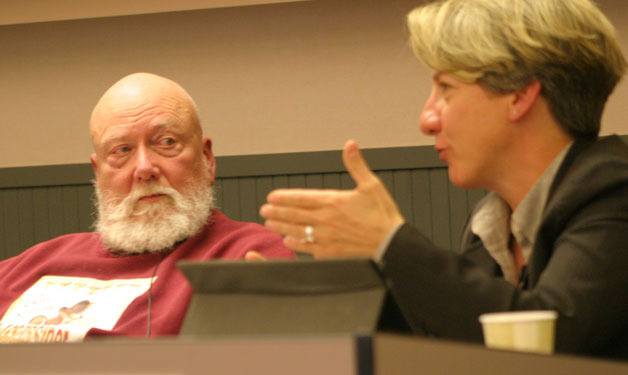LANGLEY — By the 2016-2017 school year, there could be almost 300 fewer students in South Whidbey schools than the number now seen in South End classrooms.
For the past 10 years, enrollment in South Whidbey schools has dropped, and 2010 Census data shows something good and something bad in relation to South Whidbey School District.
The good news is South Whidbey retains more than 80 percent of school-age residents between 4 and 18 years old.
The bad news is the downward trend is likely to continue, dropping South Whidbey’s student population to less than 1,200 in the next five years.
Data prepared by business director Dan Poolman for Wednesday’s school board meeting shows there are more than 2,000 school-age residents in the school district’s boundaries. The district’s initial count of students this year found 1,468 enrolled in classes.
“That’s the total population,” Poolman said. “That’s as good as it gets.”
According to the last Census, there were 1,924 students within the district’s boundaries. The 2011 district head count had
1,543 students already enrolled, or about 80 percent of the total students available.
Students transferring to other school districts are a minority. In the 2010-2011 school year, 87 students transferred to other districts, and only 48 transferred to nearby school districts in Coupeville, Oak Harbor and Mukilteo, compared to 56 students who transferred into South Whidbey School District from those three.
“It’s sobering to see that we’re capturing most of the students available to us,” said District Superintendent Jo Moccia.
Poolman used Census numbers to project the future student population. He looked at the number of residents younger than 5 years old to envision them moving through the district’s schools in the coming years.
“When we start looking at enrollment trends, I’m going to look at those top four there (under 1, 2, 3 and 4 years old) and say, ‘OK, for the next five years, what’s kindergarten going to look like?” Poolman said.
The outlook for South Whidbey gets dimmer.
More than 79 percent of households on South Whidbey do not have a school-age resident. Comparing data from the 2000 Census to the 2010 Census shows a loss of 704 school-age students, a decrease of almost 22 percent.
“It is a dramatic decline for us,” Poolman said. “It’s a fairly consistent decline, as well.”
If the trend continues, South Whidbey’s schools will have almost 300 less students in its classrooms and hallways in five years.
Board Member Steve Scoles was hesitant to accept the gloomy forecast for South Whidbey schools.
“I wouldn’t bet on this trend line,” Scoles said.
Others were more certain the falloff will continue.
“We have to believe that our enrollment is declining,” Moccia said.
Moccia asserted that the district has to prepare for the worst and hope for the best. While Scoles pointed to mass hiring at Boeing and a belief the construction and housing market will eventually rebound, Moccia said the school district alone cannot make people move here, especially younger families with children.
“We have some values here that I certainly appreciate, but that are not conducive to young families,” she said. “We’re not going to get people to move here on our own. That’s going to take a community effort.”
“The way these numbers are bearing out, even if we increased our enrollment by 25 percent, we still wouldn’t be able to maintain the enrollment we have today five years from now,” Moccia said.
“So we really have to prepare ourselves for the fact that our enrollment is declining.”



